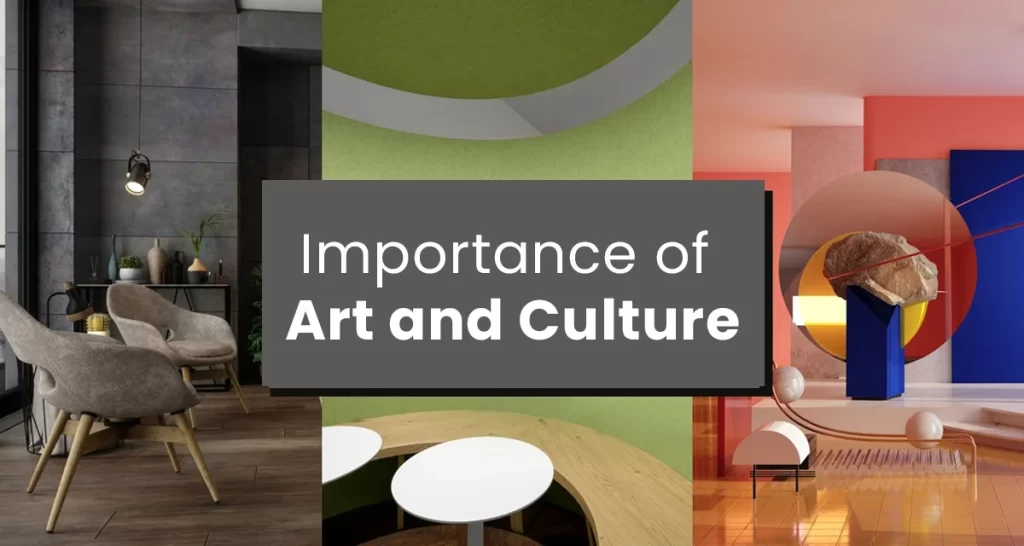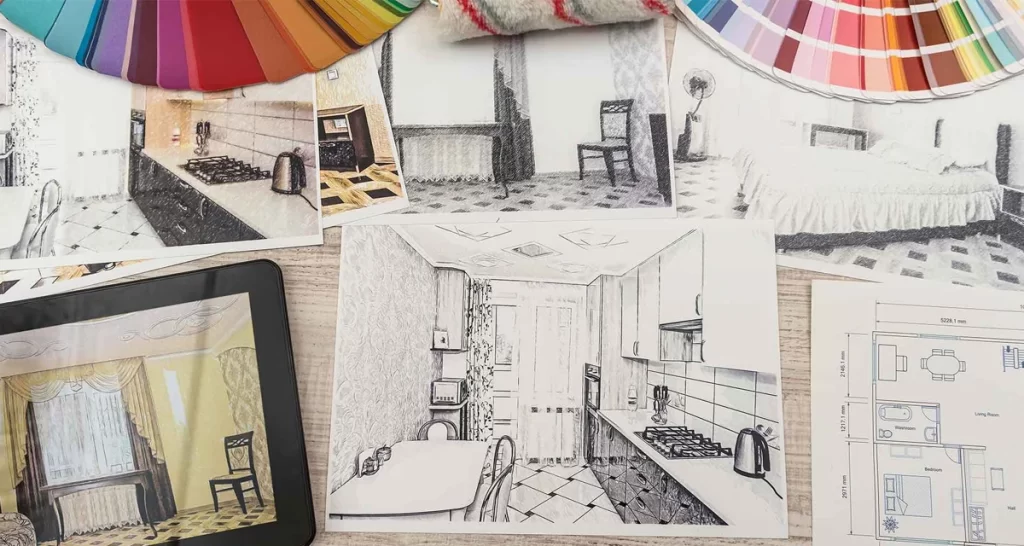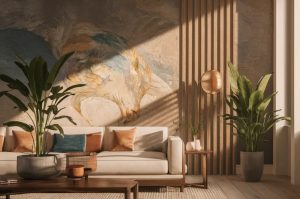In the world of home decor or maintenance culture and art in interior design plays an important role. They work together to make spaces look unique and meaningful. Art and culture are similar to best friends as they continue to inspire each other. Designing a place is not just about its appearance but also about what it communicates.
The art and cultural elements used in the interior design reflect the personas of the individuals dwelling there. Let’s understand how art and culture work together in interior design to make spaces more captivating and personal.
Importance of Culture and Art in Interior Design

1. How do art and culture impact our thinking?
So, why are art and culture important? Do they merely play the role of decorative aspects in our lives? Of course, they do, but more than that, art and culture help us reshape our thinking. In addition, they open a window to our identity and provide a mirror to reflect our culture.
Don’t you think the elements of art and culture influence us deeply? Yes, they make us ponder, imagine, and re-imagine, and they help us understand the world we live in.
2. Can art be used as a tool to reflect our culture?
Art gives us the power to express and reflect our culture. It captures the traditions, beliefs, and stories of society, making them visible and tangible.
Incorporating art in interior design helps us bridge the past with today. It aids us in portraying our cultural origins and evolving personalities. Art can be used as an assertive storyteller to narrate the story of our heritage.
3. Advantages of incorporating art and culture in interior design
Integrating culture and art in interior design helps to fill the space with warmth and quality. Let’s take the example of a well-chosen painting or sculpture. It can kindle emotions, trigger conversations, and give an idea about the space owner’s personality.
In addition, it also creates a sense of belonging and oneness for the viewers and connects them with their cultural heritage. It further results in a more welcoming and harmonious environment with elevated joyfulness among the host and visitors.
4. Elements of art and culture in interior design
Ensure you carefully select the art and cultural elements to incorporate into your interior design. Cultural motifs that inspire these elements are artwork, textiles, colour schemes, furniture styles, and architectural items.
You must be mindful while blending these elements. The ultimate goal of interior design is to make it visually appealing. However, the spaces should also be culturally rich, inviting, and meaningful. An ideal interior design is a harmonious blend of art and culture that enriches our lives and nourishes our moods.
How to incorporate culture and art in Interior Design?

It is as simple as considering your home as a canvas, and you’re the artist. You want to make it look and feel just right. How? Let’s understand.
1. Identify Design Goals
Before you start, you must think about what you want to achieve. Are you looking for a cozy living room or a grand office space? These goals will be your guiding stars.
2. Researching
You may find ideas in interior design books, magazines, and on the internet. You may find several different ways to design a space, ranging from modern to simple and traditional to intricate.
You will amaze yourself once you go through the unique styles of different cultures. Visit museums, galleries, and cultural events for interiors or other designs. You may get many ideas based on that. It’s best to capture the images you see and use them as references to craft your interior design plan.
3. Interior Design Preferences
Ensure the design suits your taste and personality. For example, anyone who likes the Moroccan style will add intricate and colourful tilework, bold colours, and unique furnishings to give it an exotic appearance.
4. Planning and Finalising
With several ideas and inspirations in your custody, it’s time to filter them into a logical plan. It is the right time to craft a vision that aligns with your design goals, cultural influences, and preferences.
Compare it with collecting all the ingredients for a recipe for a delicious meal or creating a blueprint to transform your space to enhance its look and feel.
5. Applying theme to Furniture
Ensure you choose furniture items that fit seamlessly into your cultural narrative. A perfectly fit piece of furniture carries the story forward, irrespective of a rustic wooden table or contemporary modern design.
6. Finding the Right Balance
Maintaining the appropriate balance between art and culture is crucial. Avoid overwhelming your space with design elements. Each element in the area must complement each other. An ideal incorporation of art and culture into interior design is that they coexist in perfect balance.
7. Keeping Things Authentic
Be honest with the culture you want to incorporate. While using elements from different cultures, it’s of paramount importance to stay truthful and respectful of the respective culture.
8. Adding the Final Touches
Final touches add the last layer of personality and warmth to the space. It involves artwork, textiles, and decorative items that reflect the respective culture. It’s that stage that brings the design to life.
9. Being Eco-Friendly
Today, sustainability is the talk of the world. We must think about our planet. Use materials and methodologies that are good for the planet. Or least harmful to Mother Earth.
Conclusion
Incorporating art and culture into interior design is a straightforward process, especially with the guidance of an architecture consultant in gurgaon. By drawing inspiration from diverse sources and working with architectural design consultants, you can devise a plan to beautify your space.
However, interior design is not just about aesthetics; it’s about creating a warm, meaningful environment. With architectural consultancy services, you can achieve a perfect blend of art and culture that transforms a plain space into one brimming with emotion, stories, and connections. This thoughtful design approach speaks volumes about your character, while the art communicates the chosen culture.
Partnering with architectural & engineering consultants enables you to craft an interior that tells a story through carefully selected colors, furnishings, and cultural elements. Let your space reflect your unique style and convey a rich, immersive experience.








